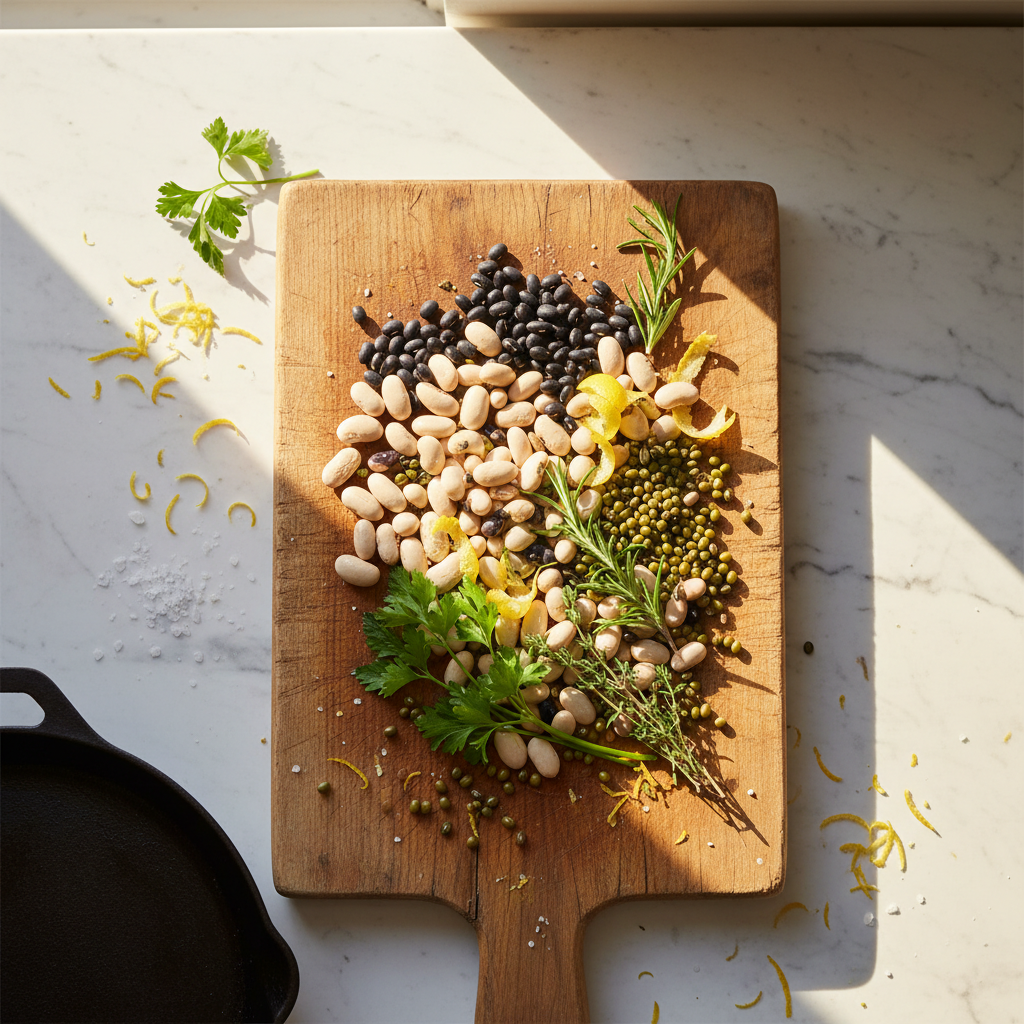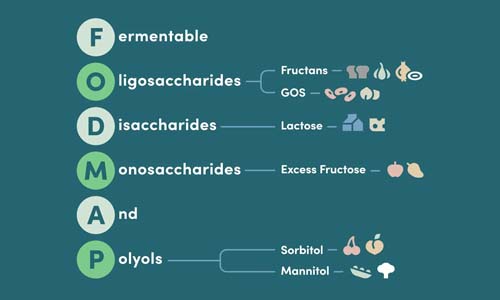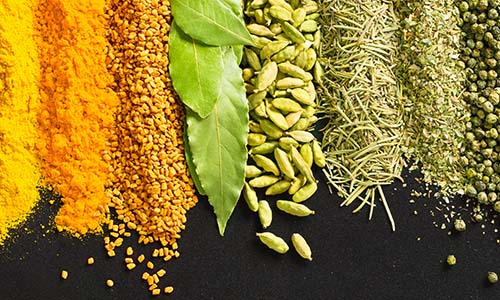Low FODMAP Beans Made Simple: Which Ones & How Much

Key Takeaways
- Not all beans are high in FODMAPs; some varieties are low FODMAP and suitable for sensitive digestion.
- Low FODMAP beans provide a good source of plant-based protein and fiber.
- Choosing the right type of bean and controlling portion size are essential to avoid digestive discomfort.
- Understanding which beans are low FODMAP can help maintain a balanced and enjoyable diet.
Table of Contents
- What Makes Beans Low FODMAP (And Why It Matters)
- Are Black Beans Low FODMAP? The Surprising Truth
- Pinto Beans and Low FODMAP Guidelines
- Smart Preparation: Maximizing Digestive Comfort
- Low FODMAP vs High FODMAP Beans: The Real Differences
- Strategic Meal Integration: Making Low FODMAP Beans Work
- Building Bold Flavors with Gut-Friendly Confidence
- Real-World Strategies, How to Add Low FODMAP Beans to Everyday Meals
- Troubleshooting & Prevention, Solving Common Bean Challenges
- Gourmet, Inclusive, and Gut-Smart, Our Approach to Flavorful Cooking
Low FODMAP Beans Made Simple: Which Ones & How Much
Beans don't have to be off-limits when you're managing digestive sensitivities. While many varieties are high in FODMAPs, those fermentable carbohydrates that can trigger bloating and discomfort, several low fodmap beans can add plant-based protein and fiber to your meals without the digestive drama. The key lies in knowing which beans to choose and exactly how much you can enjoy.
For more details on incorporating green beans into a low FODMAP diet, see are green beans low fodmap.
What Makes Beans Low FODMAP (And Why It Matters)
FODMAPs, Fermentable Oligosaccharides, Disaccharides, Monosaccharides, and Polyols, are specific carbohydrates that resist digestion in the small intestine. Beans contain galacto-oligosaccharides (GOS), a type of oligosaccharide that feeds gut bacteria, producing gas and triggering symptoms like bloating in sensitive individuals.
Low fodmap beans either contain minimal GOS naturally or become tolerable through processing and portion control. Canned beans, for instance, lose significant FODMAP content during commercial processing and canning liquid drainage. Fresh varieties like green beans and edamame contain different fiber structures that are gentler on digestion.
| Bean Type | Safe Serving | Prep Method | FODMAP Level |
|---|---|---|---|
| Edamame | ¾ cup (155g) | Fresh or frozen | Low |
| Green beans | 1 cup (125g) | Fresh, steamed | Low |
| Canned lentils | ⅓ cup (60g) | Drained, rinsed | Low |
| Canned chickpeas | ¼ cup (42g) | Drained, rinsed | Low |
Are Black Beans Low FODMAP? The Surprising Truth

Here's where many people get confused: black beans fodmap content varies dramatically based on preparation. Dried black beans soaked and cooked at home remain high in FODMAPs even in small portions. However, canned black beans, when thoroughly drained and rinsed, may be tolerated in very small amounts (roughly 2-3 tablespoons) by some individuals.
The canning process and liquid removal significantly reduce GOS content, but black bean fodmap levels still exceed those of safer options like edamame or green beans. If you're in the elimination phase of a low FODMAP diet, skip black beans entirely. During reintroduction, test small portions of well-rinsed canned varieties to assess your personal tolerance.
For reliable flavor and protein without the guesswork, stick to proven low fodmap black beans alternatives. Edamame delivers similar protein density with greater digestive confidence, while our Gourmend shelf-stable broth carton adds rich, umami depth to any bean dish without FODMAP concerns.
Pinto Beans and Low FODMAP Guidelines
The question "are pinto beans low fodmap" has a nuanced answer. Like black beans, pinto beans are naturally high in FODMAPs when prepared from dried form. Canned pinto beans, drained and rinsed, may be tolerated in small portions (approximately ¼ cup), but they're not considered reliably low FODMAP.
Monash University testing shows that even processed pinto beans contain moderate FODMAP levels that can accumulate throughout the day. If you're managing IBS or following a strict low FODMAP protocol, prioritize beans with established safe thresholds rather than testing tolerance limits with questionable varieties.
Smart Preparation: Maximizing Digestive Comfort
Proper preparation can reduce FODMAP content by up to 40% in canned beans. The technique is simple but crucial: drain canned beans completely, then rinse under cold running water for 30 seconds, stirring gently to remove residual canning liquid where FODMAPs concentrate.
For canned lentils and chickpeas:
- Open can and drain liquid completely
- Transfer beans to fine-mesh strainer
- Rinse under cold water for 30 seconds
- Shake strainer gently to remove excess water
- Use immediately or store in refrigerator up to 3 days
- Measure portions precisely using measuring cups, not estimation
- Space bean servings throughout the day rather than consuming all at once
- Pair with easily digestible foods like rice or quinoa
Fresh beans like edamame and green beans require minimal prep, simply steam or blanch until tender. The key advantage of these varieties is their naturally lower FODMAP content, eliminating guesswork around tolerance thresholds.
When building flavor, our Gourmend shelf-stable broth carton provides rich umami depth using chive sprigs, scallion greens, and nori seaweed, all low FODMAP ingredients that create satisfying, restaurant-quality taste without digestive compromise.
Low FODMAP vs High FODMAP Beans: The Real Differences

Understanding the distinction between low fodmap beans and their high FODMAP counterparts helps you make confident choices without constant symptom monitoring. The differences extend beyond just digestive impact to include preparation convenience and nutritional density.
| Bean Type | FODMAP Level | Protein per Serving | Prep Requirements | Digestive Impact |
|---|---|---|---|---|
| Edamame (¾ cup) | Low | 8g protein | Steam 3-5 minutes | Minimal gas/bloating |
| Green beans (1 cup) | Low | 2g protein | Steam 4-6 minutes | Well-tolerated |
| Kidney beans (½ cup) | High | 8g protein | Overnight soak + 1hr cook | High gas/bloating risk |
| Navy beans (½ cup) | High | 7g protein | Overnight soak + 1hr cook | Significant symptoms likely |
High FODMAP varieties like kidney and navy beans contain concentrated GOS levels that persist even after thorough cooking and rinsing. While they offer similar protein content, the digestive trade-off rarely justifies their inclusion during active symptom management.
Canned varieties of traditionally high FODMAP beans may offer slightly better tolerance due to processing, but safe serving sizes become impractically small, often just 2-3 tablespoons. For practical meal planning, focus on reliably low fodmap beans that allow generous portions without symptom anxiety.
Strategic Meal Integration: Making Low FODMAP Beans Work
Successfully incorporating low fodmap beans into daily meals requires strategic timing and smart flavor pairing. Rather than treating them as afterthoughts, position these protein sources as meal anchors that deliver both nutrition and satisfaction.
Breakfast applications: Add ½ cup steamed edamame to quinoa breakfast bowls with chive sprigs and a splash of Gourmend shelf-stable broth carton for savory morning protein. Green beans work beautifully in vegetable scrambles with firm tofu and fresh herbs.
Lunch and dinner strategies: Canned lentils (⅓ cup, rinsed) transform simple grain salads into complete meals. Toss with cooked quinoa, cucumber, and lemon vinaigrette for portable nutrition. For warm applications, simmer green beans in Gourmend broth with ginger and scallion greens for an Asian-inspired side that complements any protein.
The key to sustained success lies in batch preparation and flavor enhancement. Steam large quantities of edamame weekly, storing portions in the refrigerator for quick meal additions. Our broths provide consistent flavor development without the FODMAP concerns of traditional aromatics like garlic bulbs or onions.
Pro Strategy: Use the Gourmend recipe conversion tool to transform favorite bean-heavy recipes into low FODMAP versions using safe substitutions and proper portion adjustments.
Building Bold Flavors with Gut-Friendly Confidence
At Gourmend Foods, we believe that managing digestive sensitivities shouldn't mean sacrificing culinary excitement. Our approach to low fodmap beans centers on abundance rather than restriction, using carefully sourced ingredients that deliver restaurant-quality depth without the guesswork.
Our shelf-stable broths utilize chive sprigs, scallion greens, and leek tops for natural onion-like complexity, while nori seaweed and oyster mushrooms provide umami richness that transforms simple bean preparations into gourmet experiences. This ingredient transparency means you can cook with confidence, knowing every component supports your digestive wellness.
Whether you're exploring edamame for the first time or perfecting your green bean technique, remember that low FODMAP cooking is ultimately about expanding possibilities, not limiting them. Start with our curated recipe collection and discover how thoughtful ingredient selection creates meals that satisfy both your palate and your gut.
Real-World Strategies, How to Add Low FODMAP Beans to Everyday Meals

The beauty of low fodmap beans lies in their versatility across every meal. With proper portions and smart preparation, these protein powerhouses transform from digestive wildcards into reliable culinary allies.
Breakfast Solutions
- Green bean hash: Sauté ¾ cup fresh green beans with chive sprigs and serve alongside scrambled eggs
- Edamame breakfast bowl: Combine ½ cup shelled edamame with quinoa porridge and a drizzle of sesame oil
- Tofu scramble upgrade: Use firm tofu (⅔ cup) with turmeric and nutritional yeast for a protein-rich start
Lunch and Dinner Integration
Build substantial meals around safe bean portions using Gourmend shelf-stable broth carton for depth without digestive compromise:
- Lentil power salad: ⅓ cup canned lentils (drained, rinsed) over mixed greens with olive oil vinaigrette
- Edamame stir-fry: ½ cup edamame with bell peppers, carrots, and ginger over jasmine rice
- Chickpea grain bowl: ¼ cup canned chickpeas (thoroughly rinsed) with roasted vegetables and tahini dressing
Pro Timing Tip: Space bean servings 4-6 hours apart to prevent FODMAP stacking. If you have edamame at lunch, save your chickpea portion for tomorrow.
For enhanced flavor without gut irritation, simmer beans briefly in Gourmend broth with herbs like rosemary or thyme. This technique infuses umami while maintaining the gentle, clean-label approach our customers rely on.
For more inspiration, try the ultimate low fodmap frittata for a protein-packed, gut-friendly meal.
Troubleshooting & Prevention, Solving Common Bean Challenges
Gas and bloating remain the top concerns when reintroducing beans. The solution isn't elimination, it's strategic management.
When Symptoms Strike
If you've exceeded safe portions or experienced unexpected sensitivity:
- Reset with gentle foods: Plain rice, steamed carrots, and warm Gourmend broth for 24-48 hours
- Stay hydrated: Peppermint tea and room-temperature water aid digestion
- Light movement: A 10-minute walk helps gas movement through the digestive tract
Building Long-Term Tolerance
Gradual reintroduction works better than complete avoidance. Start with the gentlest options, green beans and firm tofu, before progressing to edamame and small portions of canned legumes.
Enzyme support can help some individuals. Alpha-galactosidase supplements target the specific sugars in beans, though results vary by person. Always consult healthcare providers before adding supplements to your routine.
When All Beans Trigger Symptoms
Complete bean intolerance doesn't eliminate plant-based protein options:
- Firm tofu and tempeh: Soy-based but lower in problematic fibers
- Quinoa and hemp seeds: Complete proteins in FODMAP-friendly portions
- Nuts and nut butters: Almonds (10 nuts), walnuts (10 halves), and natural peanut butter provide protein and healthy fats
Remember, the low FODMAP approach is temporary for most people. Work with a qualified dietitian to systematically reintroduce foods and identify your personal tolerance levels. For more on the science behind FODMAPs and IBS, visit Monash University research.
Gourmet, Inclusive, and Gut-Smart, Our Approach to Flavorful Cooking
At Gourmend Foods, we believe low fodmap beans represent possibility, not limitation. Our philosophy centers on abundance, celebrating what you can eat while building flavors that satisfy both your palate and your digestive system.
Our broths showcase this approach perfectly. Where traditional recipes rely on garlic bulbs and onions for depth, we've mastered the art of layering chive sprigs, scallion greens, and leek tops for that essential savory foundation. Our beef and vegetable broths incorporate nori seaweed and oyster mushrooms, delivering the umami complexity that transforms simple bean dishes into restaurant-quality experiences.
Why Gourmend Stands Apart
- Complete ingredient transparency: Every component listed, every FODMAP consideration addressed
- Flavor-first formulation: No compromise on taste for digestive gentleness
- Science-based approach: Monash University research guides our recipes and recommendations
- Community support: Recipe conversion tools and ongoing guidance for your culinary journey
For more delicious meal ideas, check out our low fodmap crisp roasted baby potatoes recipe. To learn more about vegetarian and vegan diets, visit the NHS guide to plant-based eating.
Frequently Asked Questions
Which types of beans are considered low FODMAP and safe for sensitive digestion?
Low FODMAP beans that are generally safe for sensitive digestion include canned lentils, canned chickpeas, edamame, and green beans. These varieties either naturally contain fewer fermentable carbohydrates or become low FODMAP through processing like canning and rinsing.
How does the preparation method, such as canning or rinsing, affect the FODMAP content of beans like black and pinto beans?
Canning and rinsing beans reduce their FODMAP content by removing some of the fermentable carbohydrates that cause digestive discomfort. For example, canned and rinsed lentils or chickpeas have significantly lower FODMAP levels compared to dried beans soaked and cooked at home, which often remain high in FODMAPs.
What are the recommended serving sizes for low FODMAP beans to avoid digestive discomfort?
Recommended serving sizes to keep beans low FODMAP include about ¼ cup drained and rinsed canned chickpeas, ⅓ cup canned lentils, ½ cup firm tofu, ¾ cup edamame, and 1 cup green beans. Sticking to these portions helps you enjoy beans without triggering digestive issues.
How can I incorporate low FODMAP beans into my meals while maintaining flavor and digestive comfort?
Incorporate low FODMAP beans by using canned and rinsed varieties in salads, soups, or stews, pairing them with Gourmend’s shelf-stable broths and seasonings for bold, gut-friendly flavor. Controlling portion sizes and combining beans with low FODMAP vegetables ensures a balanced, delicious meal that’s gentle on digestion.





